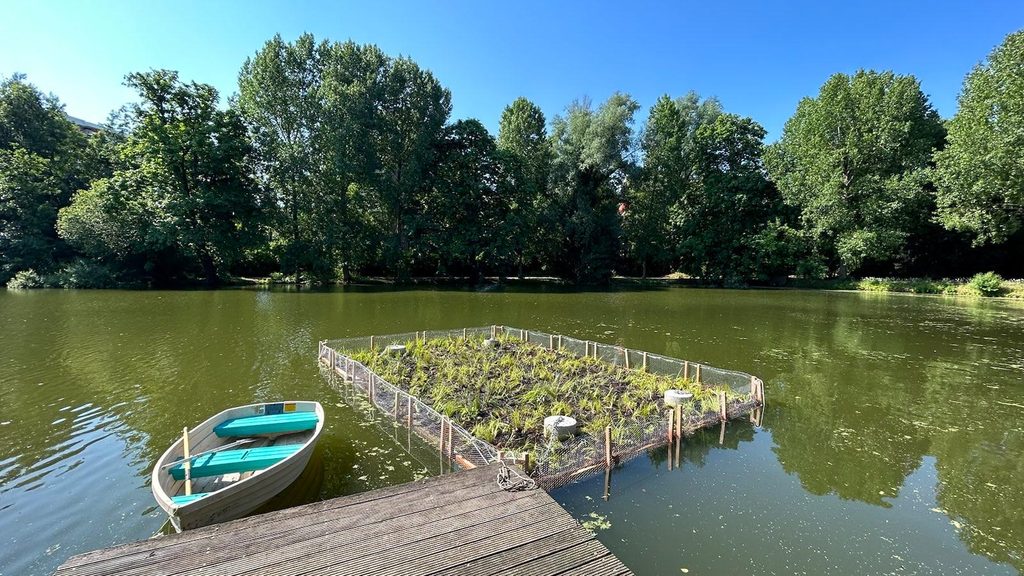Brussels is looking to boost biodiversity in its watercourses by installing vegetated rafts in its ponds to create islands that will provide new shelters for the fauna and improve water quality.
Several vegetated rafts have already been placed in the canal around the Port of Brussels in April last year. A second series of rafts is now being created by Bruxelles Environnement in the Brussels ponds. The first one – with a 36 m² surface area – was installed on Tuesday in the pond of the Royal Fisheries in Watermael-Boitsfort.
"We urgently need to protect our natural heritage and halt the decline of biodiversity if we want to secure the future of humanity," said Brussels Minister for Environment Alain Maron. "These vegetated rafts are one of the many ways we will bring nature back to Brussels and guarantee a healthy and pleasant living environment."
Refuge for fauna and flora
"The success of the rafts installed in 2022 encourages us to continue and expand this programme," Maron stated. By 2027, rafts will also be placed in the ponds at Tercoigne, Mellaerts, and the fishing pond of the Rouge-Cloître.
The vegetated rafts help restore nature to the ponds and significantly increase biodiversity. Water birds can build their nests there, safe from foxes, and small fish can lay their eggs in the underwater cages under the rafts, which are inaccessible to large fish such as pike. This is especially helpful when the banks have been built up so don't provide space for plants to grow.
The different plant species that cover the rafts absorb phosphates and nitrates and promote re-oxygenation. Algae and duckweed gradually disappear and make way for a more varied aquatic life.
Related News
- 'Duck park' in Saint-Gilles reopens after complete renovation
- 'Pure freedom': More open water swimming opportunities on the horizon
The floating structures are built of native wood and covered with helophyte plants (semi-submerged plants typical of humid areas and swamps), with willow bundles underneath, which provide shelter for the aquatic fauna (fish, invertebrates, etc).
The size of the rafts varies according to location, as do the plant species which are chosen according to the fauna and needs of each pond. The largest raft – with a surface area of 144 m² – will be placed in the Mellaerts ponds in the coming months.

